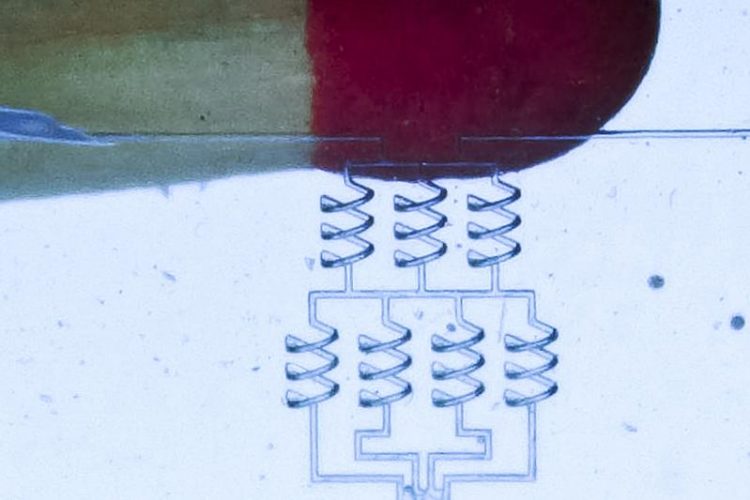Hollow structures in 3D

Three-dimensional hollow structures in quartz glass. Photo: AG Rapp
Quartz glass is the preferred material for applications that require long-term use because of its high chemical and mechanical stability and excellent optical properties. The engineer Prof. Dr. Bastian E. Rapp from the Department of Microsystems Engineering (IMTEK) at the University of Freiburg and his team have developed the Glassomer process, a method that enables scientists to shape glass like plastic.
In the scientific journal “Nature Communication”, they recently presented a new application: They are now able to produce three-dimensional hollow structures in quartz glass.
Glass is chemically very resistant, which is why cavities such as optical waveguides or microfluidic channels are difficult to produce in it, especially if they have to be three-dimensional. The Glassomer process developed by Rapp and his team simplified this process.
Glassomer is a mixture in which high-purity silicon oxide is added in fine powder form to a liquid plastic. As long as this mixture is liquid, it can be processed like a plastic. When exposed to light, it hardens so that it can, for example, be drilled or milled.
During the final heat treatment step in the process, the plastic is decomposed leaving leaving a dense glass component. Until now, channel structures could not be manufactures because the researchers had to remove the liquid material from the cavities which is not possible for long channels.
The Freiburg scientists are therefore taking a different approach by first creating the desired cavity as a polymeric component in the 3D printer: A later channel is printed as a polymer thread and then encapsulated with Glassomer.
The finished printed product is then heated to 1,300 degrees Celsius so that the plastic – including the polymer thread – is decomposed. The result is a channel surrounded by real glass.
Original publication:
Kotz, F., Risch, P., Arnold, K. et al., Rapp, B.E. (2019): Fabrication of arbitrary three-dimensional suspended hollow microstructures in transparent fused silica glass. In: Nature Communication. DOI: 10.1038/s41467-019-09497-z
Contact:
Prof. Dr. Bastian E. Rapp
Department of Microsystems Engineering
University of Freiburg
Tel.: 0761/203-7351
E-Mail: bastian.rapp@imtek.uni-freiburg.de
https://www.pr.uni-freiburg.de/pm-en/press-releases-2019/hollow-structures-in-3d…
Media Contact
All latest news from the category: Process Engineering
This special field revolves around processes for modifying material properties (milling, cooling), composition (filtration, distillation) and type (oxidation, hydration).
Valuable information is available on a broad range of technologies including material separation, laser processes, measuring techniques and robot engineering in addition to testing methods and coating and materials analysis processes.
Newest articles

High-energy-density aqueous battery based on halogen multi-electron transfer
Traditional non-aqueous lithium-ion batteries have a high energy density, but their safety is compromised due to the flammable organic electrolytes they utilize. Aqueous batteries use water as the solvent for…

First-ever combined heart pump and pig kidney transplant
…gives new hope to patient with terminal illness. Surgeons at NYU Langone Health performed the first-ever combined mechanical heart pump and gene-edited pig kidney transplant surgery in a 54-year-old woman…

Biophysics: Testing how well biomarkers work
LMU researchers have developed a method to determine how reliably target proteins can be labeled using super-resolution fluorescence microscopy. Modern microscopy techniques make it possible to examine the inner workings…





















